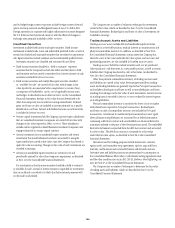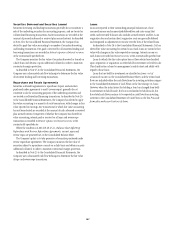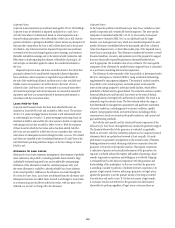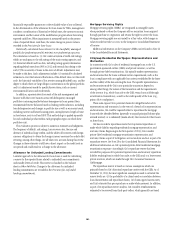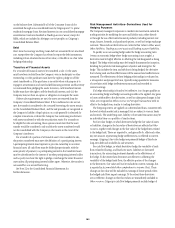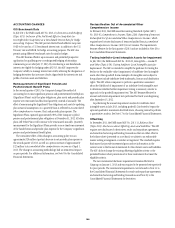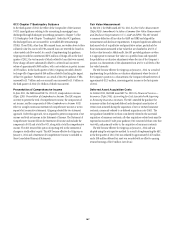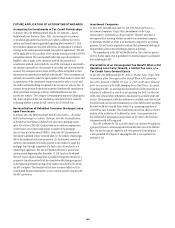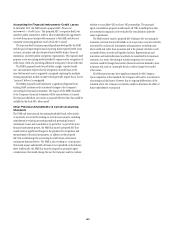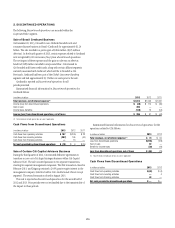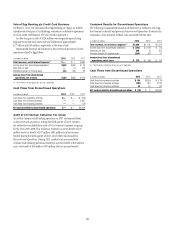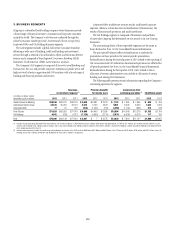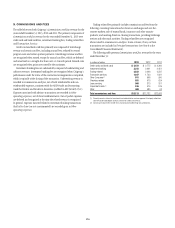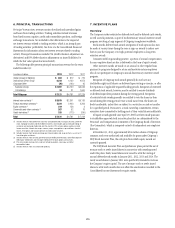Citibank 2013 Annual Report Download - page 184
Download and view the complete annual report
Please find page 184 of the 2013 Citibank annual report below. You can navigate through the pages in the report by either clicking on the pages listed below, or by using the keyword search tool below to find specific information within the annual report.166
ACCOUNTING CHANGES
OIS Benchmark Rate
In July 2013, the FASB issued ASU No. 2013-10, Derivatives and Hedging
(Topic 815): Inclusion of the Fed Funds Effective Swap Rate (or
Overnight Index Swap Rate) as a Benchmark Interest Rate for Hedge
Accounting Purposes. This ASU permits the Fed funds effective swap rate
(OIS) to be used as a U.S. benchmark interest rate, in addition to the U.S.
Treasury rate and LIBOR, for hedge accounting purposes. The ASU also
permits using different benchmark rates for similar hedges.
This ASU became effective upon issuance and permitted prospective
application for qualifying new or redesignated hedging relationships
commencing on or after July 17, 2013. By introducing a new benchmark
interest rate eligible for hedging under ASC 815, this ASU improves the
Company’s ability to manage interest rate risk by allowing the designation of
hedging derivatives that are more closely aligned with the interest rate risk
profile of certain assets and liabilities.
Remeasurement of Significant Pension and
Postretirement Benefit Plans
In the second quarter of 2013, the Company changed the method of
accounting for its most significant pension and postretirement benefit plans
(Significant Plans) such that plan obligations, plan assets and periodic plan
expense are remeasured and disclosed quarterly, instead of annually. The
effect of remeasuring the Significant Plan obligations and assets by updating
plan actuarial assumptions on a quarterly basis is reflected in Accumulated
other comprehensive income (loss) and periodic plan expense. The
Significant Plans captured approximately 80% of the Company’s global
pension and postretirement plan obligations at December 31, 2012. All other
plans (All Other Plans) will continue to be remeasured annually. Quarterly
measurement for the Significant Plans provides a more timely measurement
of the funded status and periodic plan expense for the Company’s significant
pension and postretirement benefit plans.
The cumulative effect of this change in accounting policy was an
approximate $20 million (pretax) decrease in net periodic plan expense in
the second quarter of 2013, as well as a pretax increase of approximately
$22 million to Accumulated other comprehensive income as of April 1,
2013. The change in accounting methodology had an immaterial impact
on prior periods. For additional information, see Note 8 to the Consolidated
Financial Statements.
Reclassification Out of Accumulated Other
Comprehensive Income
In February 2013, the FASB issued Accounting Standards Update (ASU)
No. 2013-02, Comprehensive Income (Topic 220): Reporting of Amounts
Reclassified Out of Accumulated Other Comprehensive Income, which
required new footnote disclosures of items reclassified from Accumulated
Other Comprehensive Income (AOCI) to net income. The requirements
became effective for the first quarter of 2013 and are included in Note 20 to
the Consolidated Financial Statements.
Testing Indefinite-Lived Intangible Assets for Impairment
In July 2012, the FASB issued ASU No. 2012-02, Intangibles—Goodwill
and Other (Topic 350): Testing Indefinite-Lived Intangible Assets for
Impairment. The ASU is intended to simplify the guidance for testing the
decline in the realizable value (impairment) of indefinite-lived intangible
assets other than goodwill. Some examples of intangible assets subject to
the guidance include indefinite-lived trademarks, licenses and distribution
rights. The ASU allows companies to perform a qualitative assessment
about the likelihood of impairment of an indefinite-lived intangible asset
to determine whether further impairment testing is necessary, similar in
approach to the goodwill impairment test. The ASU became effective for
annual and interim impairment tests performed for fiscal years beginning
after September 15, 2012.
In performing the annual impairment analysis for indefinite-lived
intangible assets in July 2013, including goodwill, Citi elected to bypass the
optional qualitative assessment described above, choosing instead to perform
a quantitative analysis. See Note 17 to the Consolidated Financial Statements.
Offsetting
In December 2011, the FASB issued ASU No. 2011-11, Balance Sheet
(Topic 210): Disclosures about Offsetting Assets and Liabilities. The ASU
requires new disclosures for derivatives, resale and repurchase agreements,
and securities borrowing and lending transactions that are either offset in
the balance sheet (presented on a net basis) or subject to an enforceable
master netting arrangement or similar arrangement. The standard requires
disclosures that provide incremental gross and net information in the
current notes to the financial statements for the relevant assets and liabilities.
The ASU did not change the existing offsetting eligibility criteria or the
permitted balance sheet presentation for those instruments that meet the
eligibility criteria.
The new incremental disclosure requirements became effective for
Citigroup on January 1, 2013 and was required to be presented retrospectively
for prior periods. The incremental requirements can be found in Note 11 to
the Consolidated Financial Statements for resale and repurchase agreements
and securities borrowing and lending transactions and Note 23 to the
Consolidated Financial Statements for derivatives.


